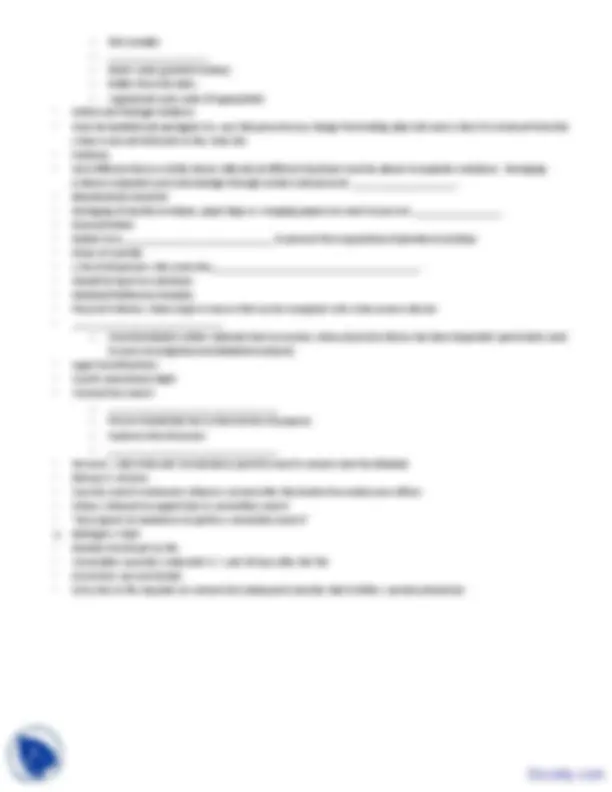
• The Crime Scene
• Chapter 2
• Physical Evidence
• Any and all objects that can establish that a crime has been committed or can provide a link between a crime and its victim
or a crime and its perpetrator.
• The _________________________________ is essential to the success of the crime lab.
• No amount of expensive, sophisticated lab equipment can salvage the investigation if physical evidence is not recognized
and correctly collected and preserved.
• In reality only crimes of a serious nature will require evidence collection
• What is a crime scene?
• Primary crime scene—________________________________________________________________
– Ex:site of homicide
• _________________________ crime scene—site of any subsequent crime. Can be multiple in number
– Ex: Where the body was dumped
• All crime scenes are unique and the boundaries of a crime scene are ____________________.
• Securing the Crime Scene
• Anyone who enters the crime scene can alter or change the scene and its evidence
• Access should be limited to crime scene personal and a ___________________________ should be kept.
• Must be guarded 24hrs a day until released
• A walk-through should be completed
• Walkthrough
• ___________________________________
• Mentally reconstruct the crime (this can be changed or adapted)
• Determine the boundaries
• Note any temporary evidence that requires immediate processing or protection
• Make a note of weather conditions and take precautions if necessary
• Record the Scene
• To preserve the original state of the scene
• The original state will only be available for a limited amount of time
• Tools:
– _______________________________
– Sketches
– Videography
– _______________________
Notes
• Must include a detailed _________________________________________ with the locations of where physical evidence
was recovered
• Must identify the time physical evidence was recovered, by whom, how, and by whom it was packaged and marked
• Tape-recording and narrating a video tape can be faster than writing.
• At some points notes must be transcribed
• Videography
• Done without __________________________ except for factual info such as date and time
• Should include both general and specific areas
• View of the crime scene from the victim’s point of view
• Photography
• Done immediately after ____________________________________
• Better to take too many than to few
• If an object has been moved it cannot be returned to be photographed
• Diagram
• Make a diagram or sketch that shows the ________________________ that a photograph cannot
• Search for Evidence










